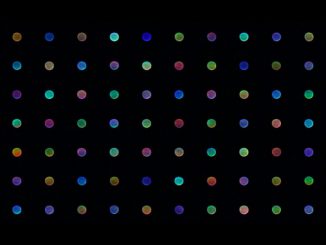
A group of young, bright stars, not visible at these infrared wavelengths, are located near the centre of the image. The powerful light emitted by these stars is setting the surrounding gas ablaze, causing it to shine; the stars also drive mighty winds that are carving the giant cavities in the cloud.
At the borders of these cavities, the interstellar mixture of gas and dust becomes denser, eventually collapsing and giving rise to a new generation of stars.
The image is a composite of the wavelengths of 70 microns (blue), 160 microns (green) and 350 microns (red).



